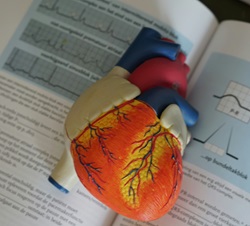 A new study presented by researchers at the 2025 European Heart Rhythm Association (EHRA) congress (30 March–1 April, Vienna, Austria) demonstrates how, using artificial intelligence (AI) to analyse standard 12-lead electrocardiograph (ECG) data taken from almost half a million cases, they were able to create an algorithm to predict the ‘biological age’ of the heart. This algorithm could be used to identify people most at risk of cardiovascular events and mortality, according to the researchers.
A new study presented by researchers at the 2025 European Heart Rhythm Association (EHRA) congress (30 March–1 April, Vienna, Austria) demonstrates how, using artificial intelligence (AI) to analyse standard 12-lead electrocardiograph (ECG) data taken from almost half a million cases, they were able to create an algorithm to predict the ‘biological age’ of the heart. This algorithm could be used to identify people most at risk of cardiovascular events and mortality, according to the researchers.
“Our research showed that, when the biological age of the heart exceeded its chronological age by seven years, the risk of all-cause mortality and major adverse cardiovascular events [MACE] increased sharply,” explained study author Yong-Soo Baek (Inha University Hospital, Incheon, South Korea). “Conversely, if the algorithm estimated the biological heart as seven years younger than the chronological age, that reduced the risk of death and major adverse cardiovascular events.”
The researchers feel that the integration of AI into clinical diagnostics presents novel opportunities for enhancing predictive accuracy in cardiology, as shown by this study.
“Using AI to develop algorithms in this way introduces a potential paradigm shift in cardiovascular risk assessment,” Baek added.
The present study evaluated the prognostic capabilities of a deep learning-based algorithm that calculates biological ECG heart age (AI ECG-heart age) from 12-lead ECGs, comparing its predictive power against traditional chronological age for mortality and cardiovascular outcomes. A deep neural network was developed and trained on a substantial dataset of 425,051 12-lead ECGs collected over the course of 15 years, with subsequent validation and testing carried out on an independent cohort of 97,058 ECGs. Comparative analyses were conducted among age- and sex-matched patients differentiated by ejection fraction (EF) too.
In statistical models, an AI ECG-heart age exceeding the heart’s chronological age by seven years was associated with a 62% increase in the risk of all-cause mortality and a 92% increase in the risk of MACE. In contrast, an AI ECG-heart age that was seven years younger than its chronological age reduced the risks of all-cause mortality by 14% and MACE by 27%. Additionally, subjects with reduced EF consistently exhibited increased AI ECG-heart ages along with prolonged QRS durations (time taken for the heart’s electrical signal to travel through the ventricles, causing contraction) and corrected QT intervals (total time needed for the heart’s electrical system to complete one cycle of contraction and relaxation).
The authors explain that the significance of the observed correlation between reduced EF and increased AI ECG-heart ages, alongside prolonged QRS durations and corrected QT intervals, suggests that AI ECG-heart age effectively reflects various cardiac depolarisation and repolarisation processes. These indicators of electrical remodelling within the heart may signify underlying cardiac health conditions and their association with EF, the researchers state.
“It is crucial to obtain a statistically sufficient sample size in future studies to substantiate these findings further,” Baek commented. “This approach will enhance the robustness and applicability of AI ECG in clinical assessments of cardiac function and health.”









